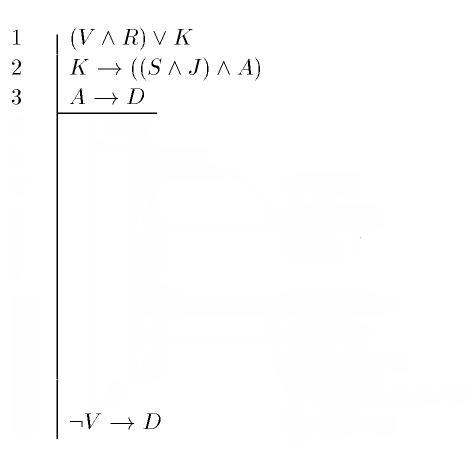
Write out the 3 premises and the conclusion - leave lots of space in between.

We cannot use the premises on lines 2, 3, (since we are missing the
antecedant for each), so we either use ( E)
("cases") (from the premise on line 1 which is a disjunction) or (→I)
(from the conclusion, which is an implication). In other words, we
have a choice here: we can work bottom-up, starting with (→I) or we
can work top-down, starting with (
E)
("cases") (from the premise on line 1 which is a disjunction) or (→I)
(from the conclusion, which is an implication). In other words, we
have a choice here: we can work bottom-up, starting with (→I) or we
can work top-down, starting with ( E). This is an honest choice:
either strategy would work, and we would end up with different
derivations depending on which we chose. Here I have opted for the
simpler (→I), working bottom-up. So we set up a subderivation with
the temporary aim to prove D from premise
E). This is an honest choice:
either strategy would work, and we would end up with different
derivations depending on which we chose. Here I have opted for the
simpler (→I), working bottom-up. So we set up a subderivation with
the temporary aim to prove D from premise  V. (Again, leave
lots of space for what comes in between.)
V. (Again, leave
lots of space for what comes in between.)
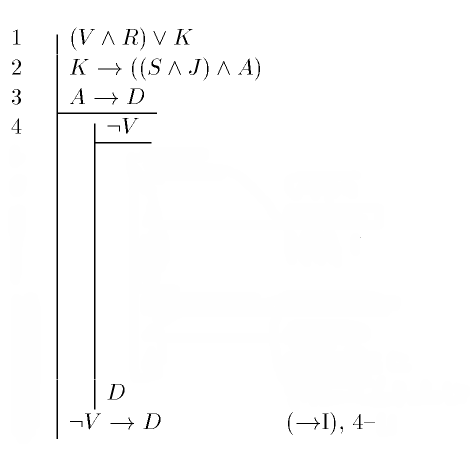
Now we're forced to use cases (with premise on line 1), so we set up the two cases subderivations, at line 5, again each with D as target.
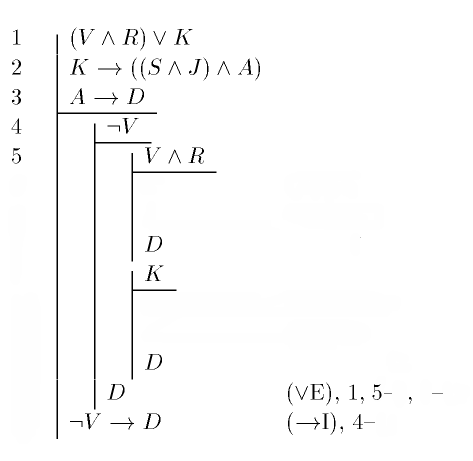
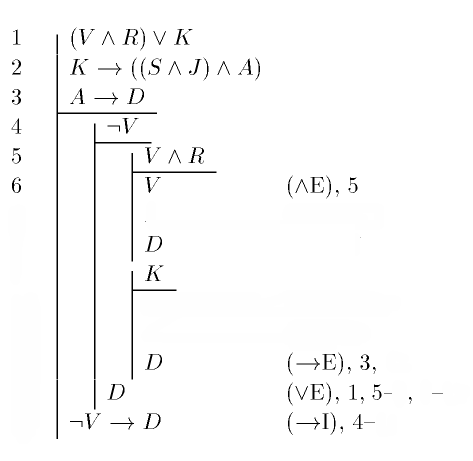
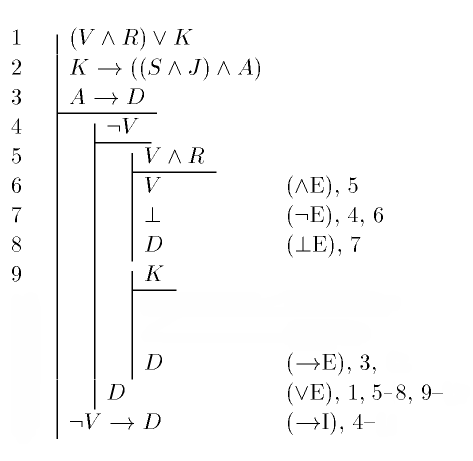
 J)
J) A,
A,
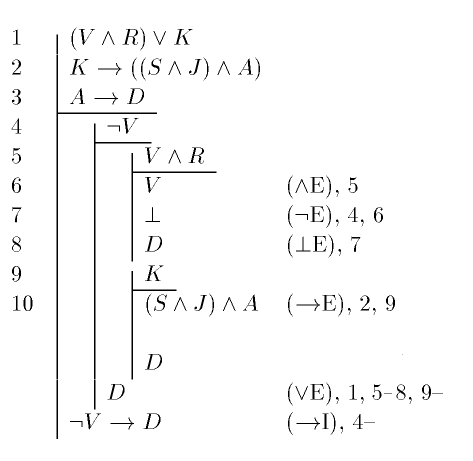
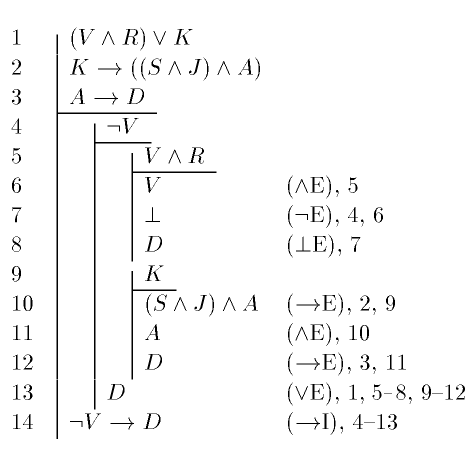
Notice we add the justifications and line numbers as we go along, as best we can (catching up once we know how many lines are being used). This saves us having to do it all at the end - you know what rule you are using as you use it, but may forget that fact later on.